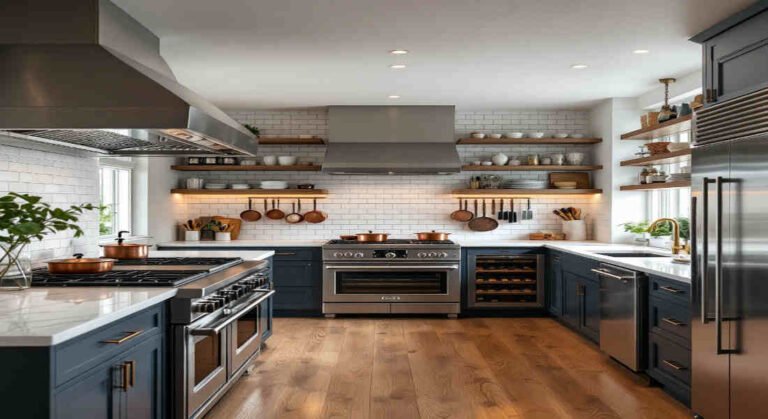When you hear the term “chef’s house kitchen,” it’s easy to imagine a high-end, state-of-the-art cooking space that’s more than just a functional room. A chef’s house kitchen is a dream for anyone passionate about cooking, whether you’re a professional chef or a home cook who loves experimenting with recipes. It’s a space designed to make cooking efficient, enjoyable, and even a little glamorous.
What Is a Chef’s House Kitchen?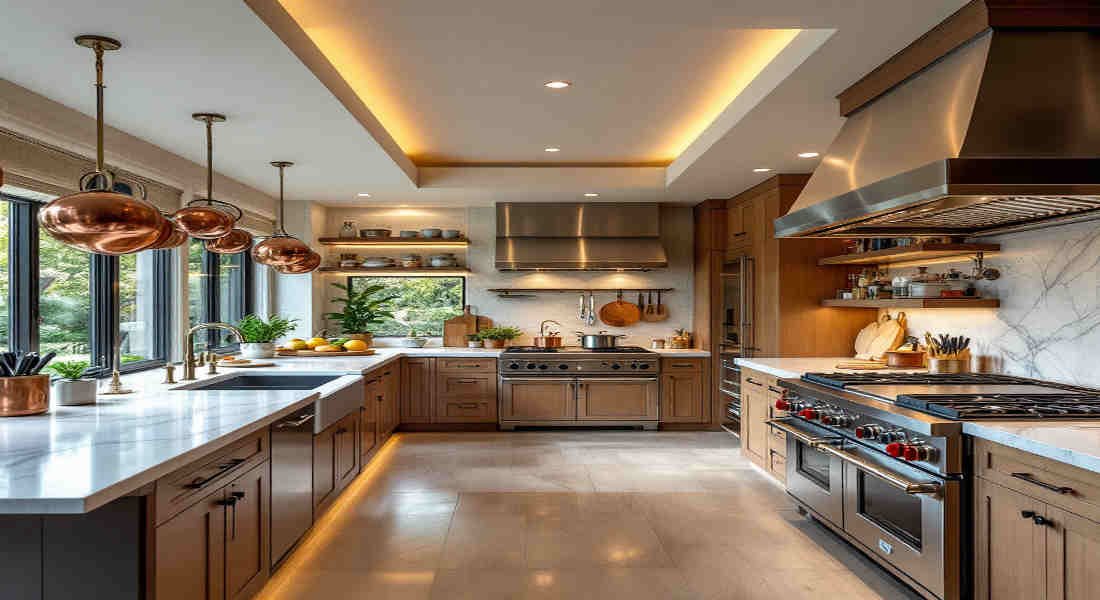
Let’s begin by answering the central question: what is a chef’s house kitchen? At its core, a chef’s house kitchen is a cooking space designed to emulate the functionality and efficiency of professional kitchens. It’s more than just a place to prepare meals; it’s a hub for creativity, precision, and seamless workflow.
How It Differs from a Regular Kitchen
A regular kitchen is built for everyday use, focusing on basic cooking needs. In contrast, a chef’s house kitchen is equipped with professional-grade appliances, ergonomic layouts, and ample workspace to handle complex cooking tasks effortlessly. The goal is to combine the efficiency of a commercial kitchen with the comfort and warmth of a home.
The Philosophy Behind a Chef’s Kitchen
The philosophy of a chef’s house kitchen revolves around three key principles:
- Functionality: Every element, from appliances to storage, is designed for maximum utility.
- Efficiency: The layout minimizes unnecessary movement, ensuring a smooth cooking process.
- Quality Tools: Professional-grade equipment and high-end materials are the backbone of a chef’s kitchen.
Whether you’re a professional chef or a passionate home cook, a chef’s kitchen is tailored to elevate your culinary experience.
Key Features That Define a Chef’s House Kitchen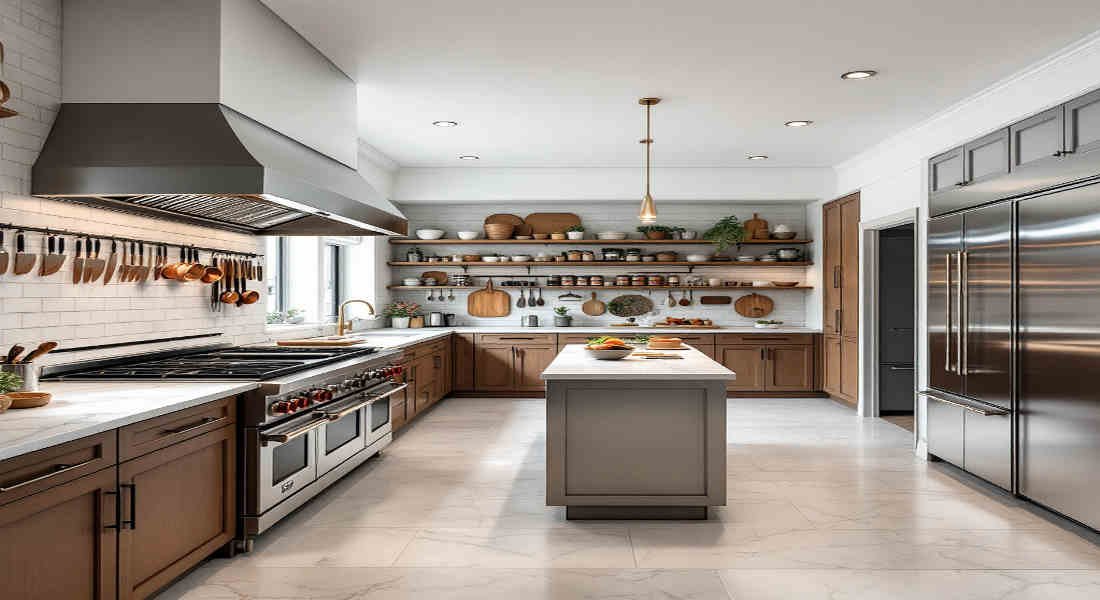
Creating a chef’s house kitchen involves incorporating specific features that enhance its functionality and aesthetic appeal. Let’s explore these in detail.
You may also read (home kitchen fire incident).
High-End Appliances
One of the hallmarks of a chef’s kitchen is its state-of-the-art appliances. These tools not only improve cooking efficiency but also provide versatility for preparing a variety of dishes.
- Commercial-Grade Stoves: These stoves often feature multiple burners (both gas and induction), allowing you to cook several dishes at once.
- Multiple Ovens: Convection ovens, steam ovens, and even pizza ovens are common additions for diverse cooking needs.
- Professional Refrigerators: Large refrigerators with advanced features like vacuum seals and temperature controls ensure optimal food storage.
Ample Workspace and Layout
A chef’s house kitchen is designed with ample counter space and smart layouts that make cooking a breeze.
- Kitchen Islands: These aren’t just decorative additions—they’re functional workstations with integrated sinks, storage, and electrical outlets.
- Durable Countertops: Materials like granite, quartz, or stainless steel are preferred for their durability and ease of cleaning.
- Open Floor Plans: These layouts allow for smooth movement and accommodate multiple cooks.
Multiple Sinks
To enhance multitasking, chefs’ kitchens often have multiple sinks strategically placed. For example:
- A prep sink on the island for washing ingredients.
- A main sink for cleaning dishes and cookware.
Walk-In Pantry and Storage Solutions
Storage is a critical element in a chef’s kitchen. A walk-in pantry helps keep ingredients organized and accessible. Customised drawers, pull-out shelves, and utensil organisers ensure that every tool has its place.
Ventilation and Lighting
Proper ventilation and lighting are often overlooked in standard kitchens, but they’re essential in a chef’s kitchen.
- Powerful Range Hoods: These keep the air clean and manage heat and smoke effectively.
- Task Lighting: Bright, focused lighting ensures precision while chopping, cooking, or plating dishes.
The Functional Layout: How a Chef’s Kitchen Enhances Cooking Efficiency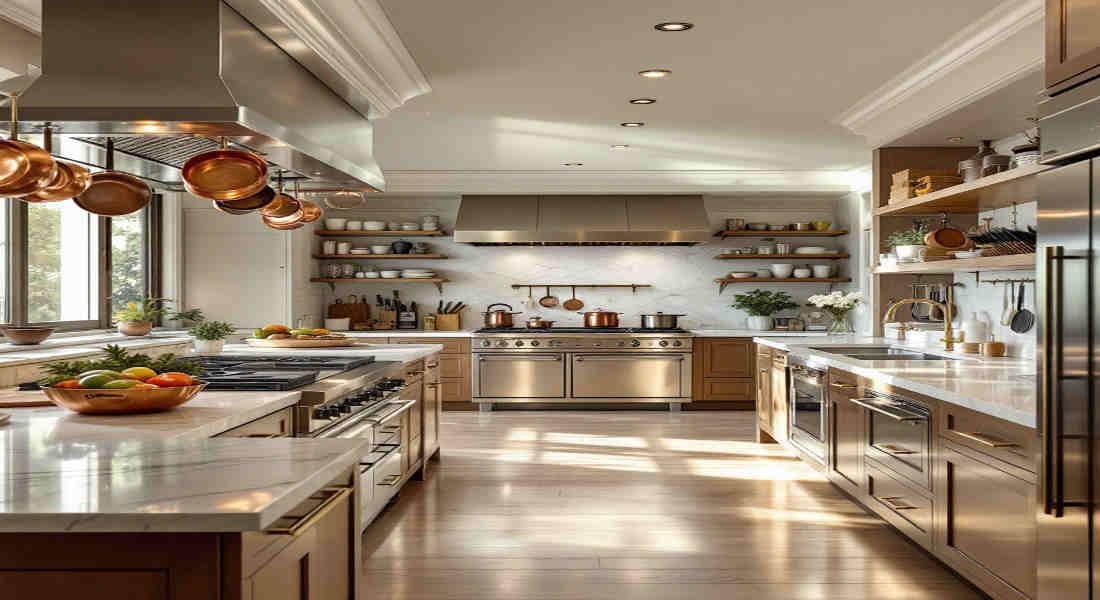
The layout of a chef’s house kitchen is meticulously designed to improve efficiency and minimise stress. Let’s break down how this is achieved.
You may also read (tighten my home kitchen faucet).
Ergonomic Design
Ergonomics plays a significant role in chefs’ kitchens. The focus is on reducing unnecessary movement by grouping essential areas (prep, cooking, and cleaning zones) close together.
- The “kitchen work triangle”—connecting the stove, sink, and refrigerator—is often emphasised.
- Specialised stations, like a prep sink near the chopping board, make multitasking easier.
Supporting Multiple Cooks
Chef’s kitchens are perfect for collaborative cooking, thanks to their spacious layouts and multiple prep stations. Features like double islands or separate work zones prevent overcrowding, even when several people are cooking together.
Benefits of Having a Chef’s House Kitchen
Investing in a chef’s house kitchen offers more than just aesthetic appeal. Here are some key benefits:
Cooking Like a Professional
With the right tools and layout, you can prepare meals at a professional level from the comfort of your home. You’ll have greater control over cooking techniques and the freedom to experiment with complex dishes.
Enhanced Hosting and Entertaining
A chef’s kitchen makes hosting dinner parties effortless. The open layout allows guests to interact with the cook, while features like warming drawers keep dishes ready to serve.
Increased Home Value
A well-designed chef’s kitchen is a sought-after feature for homebuyers. It adds significant value to your property and makes it stand out in the market.
Design Secrets and Tips to Create Your Own Chef’s House Kitchen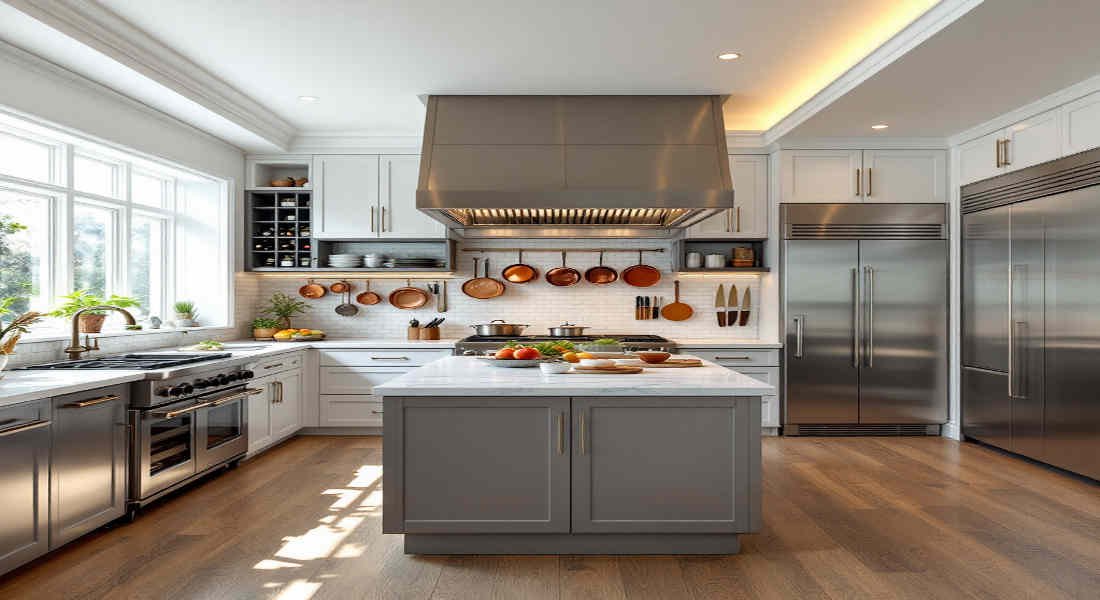
Dreaming of creating your own chef’s kitchen? Here are some practical tips to bring your vision to life:
Choosing the Right Appliances
Balance your budget with quality when selecting appliances. Opt for versatile tools that suit your cooking style, like a gas range with multiple burners or a convection oven.
Maximizing Storage
Invest in smart storage solutions like pull-out cabinets, deep drawers, and utensil dividers. A walk-in pantry is ideal for keeping ingredients and bulk items organised.
Incorporating Technology
Modern chefs’ kitchens often feature smart appliances that can be controlled via smartphone. These include refrigerators with touchscreens, ovens with pre-programmed settings, and advanced ventilation systems.
Durable Materials
Choose materials like stainless steel for countertops and backsplashes—it’s easy to clean and resistant to wear and tear.
Common Misconceptions About Chef’s Kitchens
Let’s address some common myths about chefs’ house kitchens:
- “Only for Professional Chefs”: These kitchens are designed for anyone passionate about cooking, not just professionals.
- “Expensive and Impractical”: While they can be pricey, you can customise a chef’s kitchen to fit your budget. Functionality should always take priority over aesthetics.
- “Complicated to Maintain”: With the right materials and organisation, chefs’ kitchens are surprisingly easy to maintain.
Real-Life Examples and Inspiration
To inspire you, here are some real-life examples of chefs’ house kitchens:
FeatureExample
Double Islands are Perfect for hosting and separating prep areas from serving zones.
Walk-In Pantry : A must-have for keeping ingredients organised and accessible.
Specialised Appliances Pizza ovens, wine coolers, and sous-vide stations for diverse cooking styles.
You may also read (home kitchen counter height easily).
